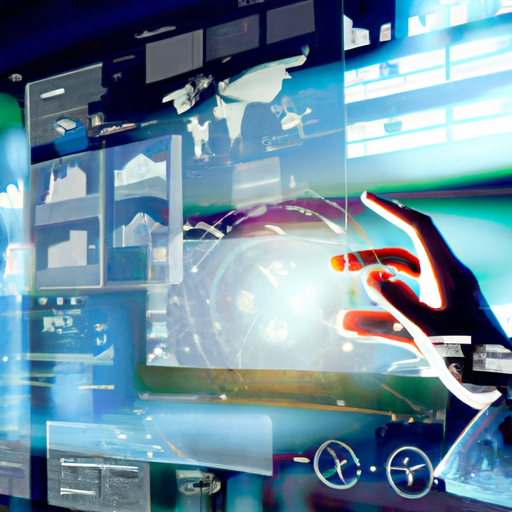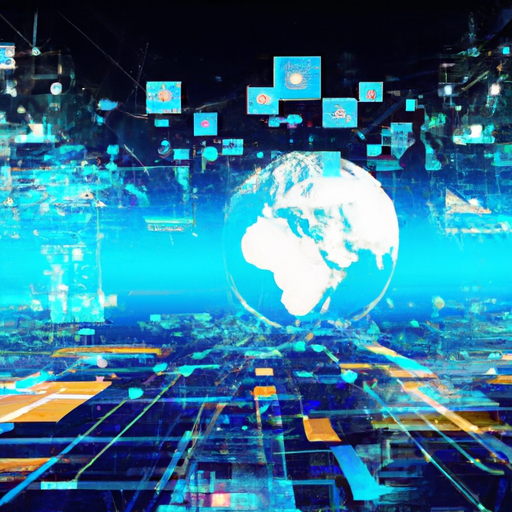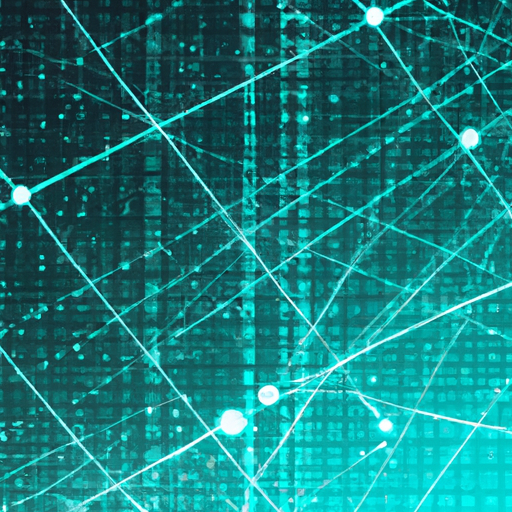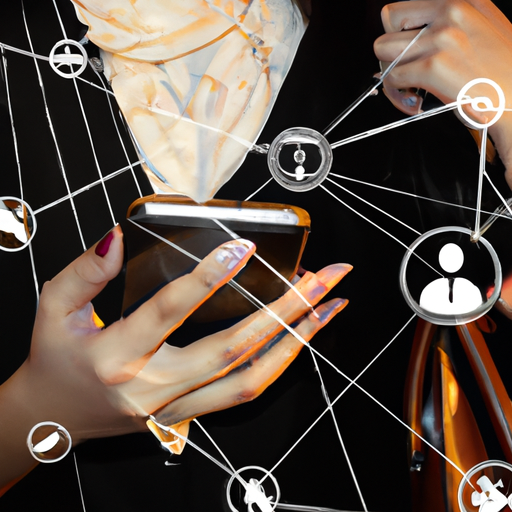Enterprise Technology Trends
In “Enterprise Technology Trends,” you’ll explore the latest advancements in technology specifically geared towards businesses. From artificial intelligence and machine learning to cloud computing and cybersecurity, this article will give you a comprehensive overview of the emerging trends that are shaping the future of enterprise technology. Discover how these innovations are revolutionizing industries, optimizing processes, and driving growth for businesses of all sizes. Keep up with the rapidly evolving landscape of enterprise technology by staying informed on the latest trends and developments.
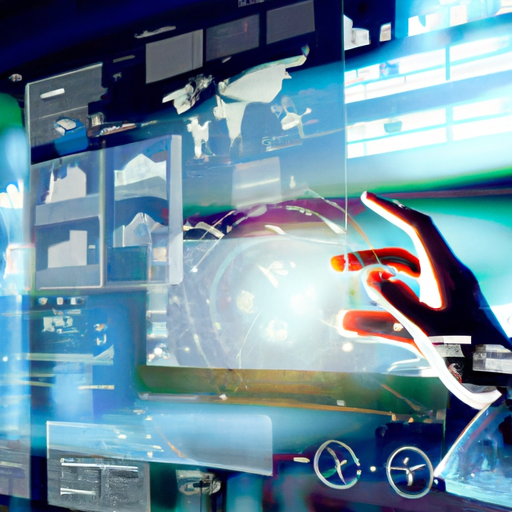
Table of Contents
Artificial Intelligence (AI)
Artificial Intelligence, commonly referred to as AI, is a branch of computer science that focuses on the development of intelligent machines and systems that can perform tasks that usually require human intelligence. AI systems are designed to analyze vast amounts of data, learn from it, and make decisions or perform actions based on that data.
Machine Learning
Machine Learning is a subset of AI that involves the development of algorithms and models that enable computers to learn from and make predictions or decisions without being explicitly programmed. In other words, through Machine Learning, computers can teach themselves to improve their performance on a specific task over time, by learning from the patterns and insights in the data they analyze.
Natural Language Processing
Natural Language Processing (NLP) is a field of AI that focuses on the interaction between computers and human language. NLP enables computers to understand, interpret, and respond to human language, both in written and spoken forms. With the advancements in NLP, computers can now perform tasks like language translation, sentiment analysis, text generation, and speech recognition with impressive accuracy.
Robotic Process Automation
Robotic Process Automation (RPA) involves the use of software robots to automate repetitive and rule-based tasks that were previously performed by humans. These robots can perform tasks like data entry, file manipulation, data extraction, and report generation with high accuracy and efficiency. RPA not only eliminates the risk of human error but also frees up human resources to focus on higher-value tasks that require creativity and critical thinking.
Internet of Things (IoT)
The Internet of Things (IoT) refers to the network of physical objects or “things” embedded with sensors, software, and connectivity that enables them to collect and exchange data. These connected devices can communicate with each other and with central control systems, making it possible to monitor and control various aspects of our physical environment more efficiently.
Connected Devices
Connected devices are everyday objects that are equipped with sensors, software, and network connectivity to gather and exchange data. These devices can range from smartphones, wearables, and smart appliances to industrial machinery and infrastructure. The data collected and transmitted by these devices can be used for various purposes, such as real-time monitoring, predictive maintenance, and remote control.
Smart Cities
Smart cities leverage IoT technology to optimize the efficiency of urban services and improve the quality of life for their residents. By integrating IoT-enabled devices and systems, cities can monitor and manage various aspects like traffic flow, energy consumption, waste management, public safety, and environmental conditions. The data collected through the IoT can help city authorities make informed decisions, reduce costs, and provide better services to their citizens.
Industrial IoT
The Industrial IoT (IIoT) is a specific application of IoT technology in industrial settings, such as manufacturing plants, logistics centers, and energy facilities. IIoT enables the integration of sensors, machines, and systems to create a networked environment where data is exchanged, analyzed, and acted upon in real-time. This allows for predictive maintenance, improved operational efficiency, and enhanced safety in industrial processes.
Cloud Computing
Cloud computing refers to the delivery of computing resources, such as servers, storage, and databases, over the internet on a pay-as-you-go basis. Rather than owning and maintaining physical infrastructure, companies can rely on cloud service providers to handle their computing needs, enabling them to scale resources up or down as required, without upfront capital investment.
Hybrid Cloud
Hybrid cloud is a combination of public and private cloud infrastructure, providing companies with the flexibility to leverage the benefits of both. By using a hybrid cloud model, organizations can keep sensitive data and critical workloads on-premises or in a private cloud, while taking advantage of the scalability and cost-effectiveness of the public cloud for less sensitive data and workloads. This hybrid approach allows for better control, security, and optimization of resources.
Multi-Cloud Strategy
A multi-cloud strategy involves using multiple cloud service providers to host different aspects or components of an organization’s IT infrastructure. By adopting a multi-cloud approach, companies can avoid vendor lock-in, mitigate risks, and leverage the unique capabilities and pricing models of different cloud providers. A multi-cloud strategy also enables organizations to distribute workloads across multiple clouds, improving resilience, performance, and reducing dependency on a single provider.
Serverless Computing
Serverless computing, also known as Function as a Service (FaaS), allows developers to write and run applications without worrying about the underlying infrastructure. In a serverless architecture, the cloud service provider automatically manages the provisioning and scaling of resources, so developers can focus purely on writing code for specific functions or microservices. This model offers enhanced scalability, reduced operational overhead, and cost efficiency, as users only pay for the actual consumption of resources as opposed to a fixed infrastructure.
Big Data and Analytics
Big Data refers to the vast volumes of structured and unstructured data that organizations generate and collect. Big data analytics involves the use of advanced tools and techniques to extract valuable insights, patterns, and trends from this data, enabling organizations to make data-driven decisions and gain a competitive advantage.
Predictive Analytics
Predictive analytics leverages historical and real-time data to make predictions about future outcomes or behaviors. By applying statistical algorithms and machine learning techniques to large datasets, organizations can identify patterns and trends that can help them anticipate customer behavior, optimize supply chains, prevent failures, and improve decision-making across various domains.
Data Visualization
Data visualization is the process of representing complex data in a visual and easily understandable format, such as charts, graphs, or maps. It helps individuals and organizations to comprehend, analyze, and communicate data more effectively. By using data visualization tools and techniques, organizations can uncover insights, identify trends, and convey information in a way that is accessible to a broad audience.
Real-time Data Processing
Real-time data processing involves the analysis and processing of data as soon as it is generated or received, without any delay. This enables organizations to make immediate decisions, respond to events in real-time, and derive actionable insights while data is still fresh and relevant. Real-time data processing is crucial in domains such as finance, transportation, healthcare, and manufacturing, where timely action can significantly impact outcomes.
Cybersecurity
Cybersecurity encompasses the practices, technologies, and measures designed to protect computer systems, networks, and data from unauthorized access, theft, damage, or disruption. With the increasing interconnectedness and digitization of businesses and society, ensuring robust cybersecurity measures has become essential to safeguarding sensitive information and maintaining trust in the digital ecosystem.
Endpoint Security
Endpoint security focuses on protecting the computing devices (endpoints), such as laptops, desktops, mobile devices, and servers, from cyber threats. Endpoint security solutions include antivirus software, firewalls, secure web gateways, and intrusion detection systems. With the proliferation of mobile and remote work, securing endpoints has become crucial to prevent unauthorized access, data breaches, and malware attacks.
Cloud Security
Cloud security involves protecting cloud infrastructure, applications, and data stored in the cloud from a wide range of cyber threats. Cloud service providers implement various security measures, such as encryption, access controls, and regular security audits, to ensure the confidentiality, integrity, and availability of data stored and processed in the cloud. Additionally, organizations must also implement their own security practices and policies to mitigate the risks associated with cloud-based services.
Identity and Access Management
Identity and Access Management (IAM) is concerned with managing and controlling user identities, permissions, and access to systems and resources. IAM solutions provide mechanisms for user authentication, authorization, and accountability, ensuring that only authorized individuals can access the right resources at the right time. Effective IAM practices help organizations prevent unauthorized access, strengthen security, and enforce compliance with data protection regulations.
Blockchain Technology
Blockchain technology is a distributed ledger technology that enables the secure and transparent recording of transactions across multiple parties or entities. Each transaction, or block, is linked to the previous one, forming a chain of blocks, hence the name. Blockchain technology offers several advantages, such as transparency, immutability, and enhanced security, making it suitable for applications that require trust and verifiability.
Smart Contracts
Smart contracts are self-executing agreements that are stored and executed on a blockchain. These contracts automatically enforce the terms and conditions defined within them, eliminating the need for intermediaries or third-party involvement. By leveraging blockchain’s security and tamper-proof nature, smart contracts enable secure and efficient digital transactions, reducing costs and enhancing transparency, particularly in areas like supply chain management and financial transactions.
Supply Chain Management
Blockchain technology has the potential to revolutionize supply chain management by providing transparency, traceability, and efficiency across the entire supply chain. By recording and validating every transaction on a blockchain, companies can track the movement of goods, verify authenticity, prevent counterfeiting, and streamline processes. The decentralized nature of blockchain ensures that all stakeholders have access to real-time, trustworthy information, enabling better collaboration and risk management.
Cryptocurrencies
Cryptocurrencies, such as Bitcoin and Ethereum, are digital or virtual currencies that use cryptography for secure transactions and control the creation of new units. Blockchain technology underpins the functioning of cryptocurrencies, providing the necessary security, transparency, and decentralization. Cryptocurrencies offer fast, borderless, and permissionless transactions, making them an alternative to traditional financial systems. They also enable new models of fundraising, such as Initial Coin Offerings (ICOs), and can facilitate innovative payment systems and financial instruments.
Augmented Reality (AR) and Virtual Reality (VR)
Augmented Reality (AR) and Virtual Reality (VR) are immersive technologies that overlay or simulate virtual experiences in the real world. AR enhances the real world by adding digital information or virtual objects, while VR creates a fully immersive virtual environment.
Training and Simulation
AR and VR have significant applications in training and simulation across various industries. They can provide immersive and realistic environments for training professionals in fields such as medicine, aviation, and manufacturing. These technologies enable hands-on learning, realistic simulations of hazardous or complex scenarios, and the ability to practice and refine skills in a controlled yet immersive environment.
Marketing and Advertising
AR and VR offer exciting opportunities for marketing and advertising, enabling brands to create interactive and immersive experiences for customers. AR can enhance product visualization by overlaying virtual objects or providing additional information, while VR can transport consumers to virtual showrooms or provide virtual tours. These technologies can help businesses engage and captivate customers, drive brand awareness, and provide unique and personalized experiences.
Healthcare and Medical Fields
AR and VR have transformative potential in healthcare and medical fields, revolutionizing patient care, training, and medical education. AR can assist surgeons by overlaying real-time patient data or anatomical information during procedures, improving accuracy and patient outcomes. VR can provide realistic simulations for medical training, allowing students and professionals to practice complex procedures without risk to patients. These technologies also have applications in pain management, mental health therapy, and rehabilitation.
Edge Computing
Edge computing is a distributed computing paradigm where data processing and storage are performed closer to the source of data generation, rather than relying on centralized data centers or the cloud. By processing data at the edge of the network, closer to the devices or sensors generating the data, organizations can reduce latency, conserve bandwidth, enhance data privacy, and respond to events in real-time.
Fog Computing
Fog computing is an extension of edge computing that aims to provide resources and computing capabilities in the network between edge devices and the cloud. The fog layer, situated closer to the edge devices, enables data filtering, preprocessing, and analysis before transmitting relevant information to the cloud or data center. This architecture reduces latency, improves scalability, and enables faster decision-making in IoT deployments.
Distributed Cloud
Distributed cloud takes edge computing to the next level by distributing cloud services and capabilities across multiple locations, including edge devices, regional data centers, and public cloud providers. This approach allows for a more distributed and decentralized infrastructure, enabling organizations to minimize data transfer costs, enhance performance, and address regulatory or compliance requirements. Distributed cloud architecture also improves reliability and provides a more resilient infrastructure.
Real-time Data Processing
Edge computing enables real-time data processing by processing data locally at the edge, without the need to transmit it to a centralized cloud or data center. Real-time data processing is vital for time-sensitive applications, such as autonomous vehicles, industrial control systems, and streaming analytics. By analyzing and acting upon data close to its source in real-time, organizations can achieve faster response times, optimize system performance, and make immediate decisions based on the most up-to-date information.
5G Technology
5G technology is the next generation of wireless communication technology that offers significantly faster data transfer speeds, lower latency, and ultra-reliable connectivity compared to previous generations. 5G aims to meet the increasing demands of data-intensive applications, such as IoT, augmented reality, and autonomous vehicles, by providing faster and more reliable network connectivity.
Fast Mobile Internet
5G technology offers significantly higher data transfer speeds compared to previous mobile network technologies, enabling faster download and upload speeds for mobile devices. This enhances the user experience and supports bandwidth-intensive applications, such as high-definition video streaming, gaming, and Virtual Reality.
Internet of Things (IoT) Connectivity
5G networks provide enhanced connectivity and support for massive IoT deployments, where a large number of devices are connected simultaneously. With its low latency and high capacity, 5G enables real-time monitoring, control, and communication between a diverse range of IoT devices, from sensors and wearables to autonomous vehicles and smart infrastructure.
Enhanced Mobile Broadband
5G technology offers substantial improvements in mobile broadband capabilities, enabling better coverage, reduced network congestion, and increased capacity. With 5G, users can expect improved network performance even in densely populated areas or areas with high data demand, ensuring a seamless and uninterrupted mobile experience.
Robotic Process Automation (RPA)
Robotic Process Automation (RPA) refers to the use of software robots or “bots” to automate repetitive and rule-based tasks previously performed by humans. RPA mimics human actions in digital systems, executing tasks such as data entry, data manipulation, report generation, and file processing with high accuracy and efficiency.
Automating Repetitive Tasks
RPA enables organizations to automate repetitive tasks, freeing up human resources to focus on more strategic and value-added activities. These tasks often involve manual data entry, data processing, report generation, and other routine administrative activities. By automating these tasks, organizations can achieve significant time and cost savings, reduce error rates, and improve overall productivity.
Efficiency and Cost Savings
RPA can streamline business processes and workflows, resulting in improved operational efficiency and cost savings. By automating repetitive tasks, organizations can eliminate human error, reduce cycle times, and enhance process consistency. The increased efficiency and productivity achieved through RPA can lead to cost savings and improved customer satisfaction.
Workflow Optimization
RPA can optimize complex workflows and improve the coordination between systems and applications. Software robots can easily integrate with existing IT infrastructure, enabling seamless data transfer and information exchange between different systems. By automating the handoff of data and tasks between systems, RPA improves workflow efficiency, reduces manual intervention, and ensures smoother end-to-end processes.
In conclusion, the rapidly evolving landscape of enterprise technology trends is transforming industries and shaping the future of work. From Artificial Intelligence and Machine Learning to Blockchain and 5G technology, organizations are leveraging these innovative solutions to drive efficiency, enhance decision-making, and create new opportunities. Understanding these trends and their potential applications can empower businesses to stay ahead in a highly competitive digital era.
